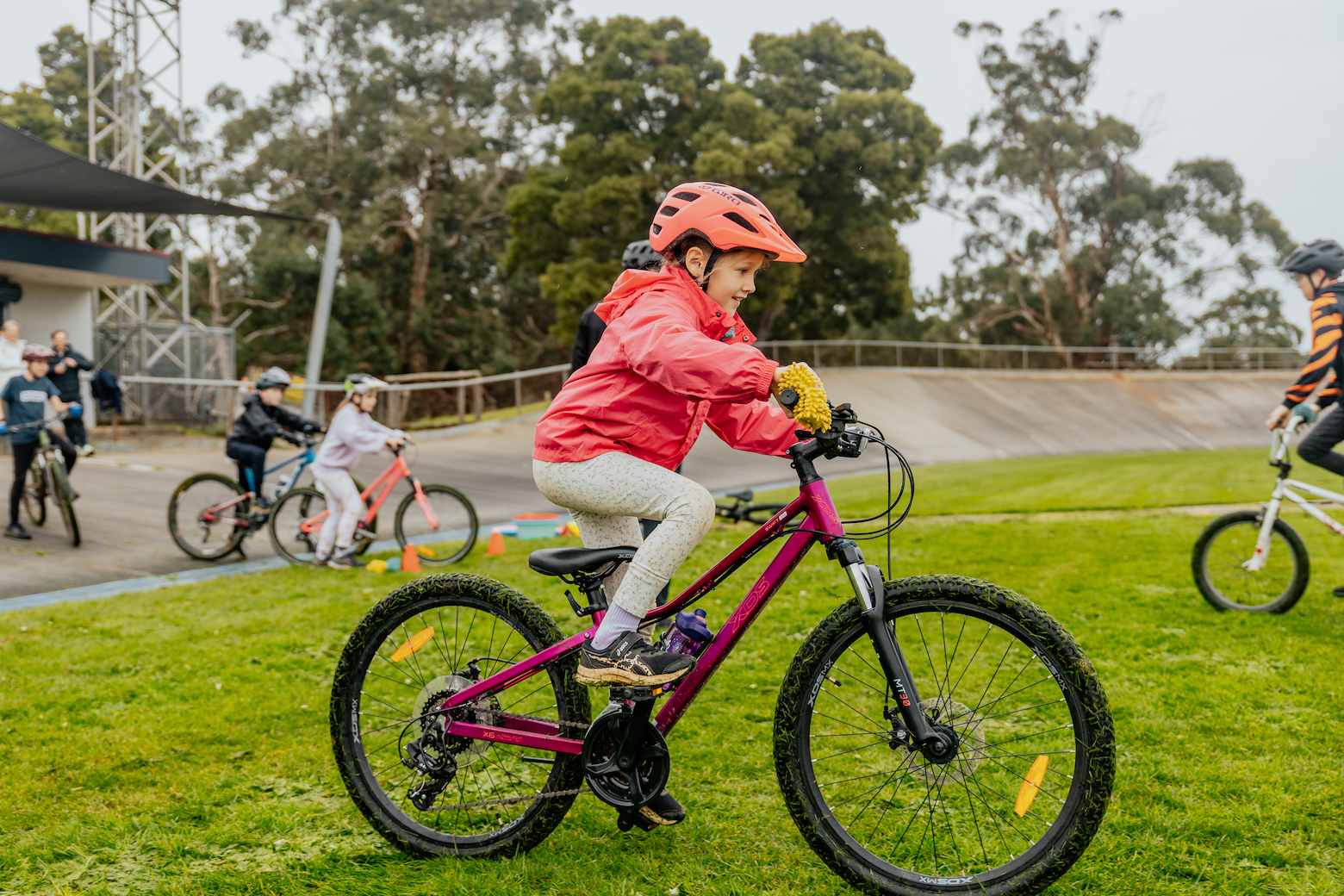Buying a bike for your child can be overwhelming with so many factors to consider. Which size and tyre width is best? What gears and brakes do you choose? The list goes on.
Overall safety and comfort of your little one is the main priority, so here are some helpful tips to get your started in finding the right bike for your child.
Choosing the right fit
One of the most important considerations when buying your child’s first bike is what size is best. The size of the bike is crucial for both safety and comfort. Ensure that the bike is the right size for your child's height and leg length. They should be able to touch the ground with their feet when sitting on the saddle.
It’s worth going to a bike shop (instead of a department store) and chatting to the experts to help get the right fit.
Unlike adult bikes that are measured via the frame, kids’ bikes are measured by wheel size, and so the size is not indicative of the frame size or seat height of the bike.

As well as looking at the bike’s tyre size, be aware of the minimum and maximum seat height to make sure your child can fit the bike.
Look for safety features
Safety is paramount when it comes to kids' bikes. Investing in a quality bike that is well-made and durable will be safer and provide a better riding experience for your child. It should also last longer.
Look for features like coaster brakes or hand brakes that are easy for kids to use.

Is your child comfortable using hand brakes? Or are coaster brakes a better option?
- Coaster brakes are activated by pedalling backward and is primarily found on smaller bikes as younger children (usually 2-5 years of age) lack the arm and hand strength to operate the hand lever.
- Physical ability, confidence and strength will determine when your child is ready to rely solely on hand brakes. Generally, as the size of the bike increases, it's more likely the brakes will be operated by hand, both front and rear.
Other safety features to look for are chain guards to protect little fingers, and reflectors or lights for visibility. And don’t forget accessories like a bell is also a must.
Comfort is key
If your child if comfortable on the bike they are more likely to have fun and continue to want to ride.
A good bike fit, and seat height will help with comfort but other touchpoints including saddle and handlebar grips are also important factors to consider.
The grips will influence how the child handles and controls the bike. Make sure the grips are not too thick for small hands and can easily be held onto.
For smaller bikes, look for grips that have large bulges on the outside to provide extra protection in the event of a fall or if they scrape their handlebars against walls, bushes or other sharp objects.

Grips such as these pictured provide extra protection for little hands.
Pedals should have a grippy or rough surface so that feet don't slip off, and that should be the case on both sides of the pedals.
You may want to consider a lightweight bike that is easier for kids to handle and manoeuvre, especially when they're learning to ride.
Also, think about where your child will be riding the bike. If they'll be riding on rough terrain or trails, you might need a bike with thicker tires and more suspension.

Make sure the pedals are grippy so your child's feet don't slip off.
Single speed vs multiple gears
Kids bikes will typically begin with a single gear to not overcomplicate their bike riding experience, but as the child gets more experienced and skilled, more speeds are available.
A single-speed gear typically features an easy pedalling ratio, so children have no problems turning the pedals over.
If there is a still a single-speed gear present as the size of the bike increases, this ratio is likely to be larger, making it harder to pedal initially but capable of faster overall speeds.

Bikes for older children usually come with multiple gears.
When multiple gears become available, it usually involves a single cog on the front and numerous cogs on the rear with a shifting mechanism on the handlebar to control them. Often children will have access to seven or eight gears, to begin with, but some 20in bikes can have 21 or 24 gears with three cogs on the front and seven or eight cogs on the rear.
You get what you pay for
Before you buy a bike, set a budget and look for bikes that fit within that range. Remember that a higher price often reflects better quality and durability.
While bikes from the big department stores may be cheaper, they often are made of less durable and quality materials. It may be beneficial too, while your child is growing, to choose a bike with adjustable features like seat height and handlebar height to accommodate your child's growth.
Again, check the bikes minimum and maximum seat height and the standover height.
Involve your child
Lastly, involve your child in the decision-making process.
Let them choose a bike in a colour or style they like, as this can increase their enthusiasm for riding.

